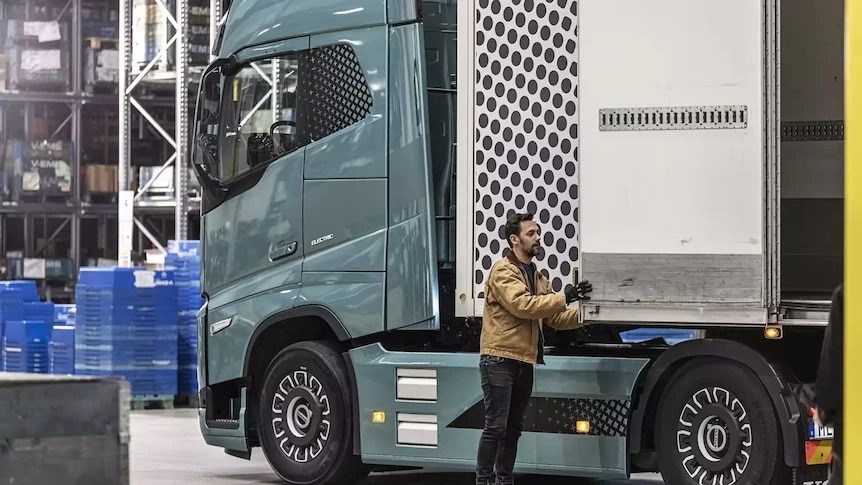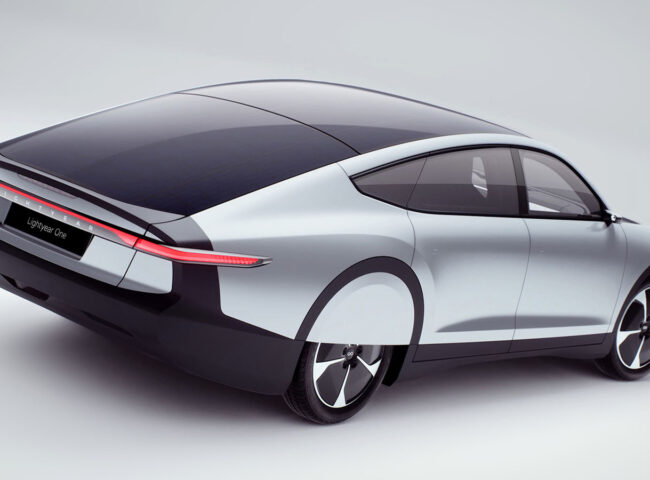Table of Contents
Heavy electric vehicles are electric vehicles that are designed to carry heavy loads. These vehicles are large in size and used for carrying heavy loads. Heavy electric vehicles are more powerful than normal electric passenger vehicles and are mostly used in industrial works such as construction, mining, transport, and agriculture. Heavy electric vehicles are classified into several categories including electric buses, electric trucks, and electric tractors. Heavy electric vehicles have less operating cost compared to conventional heavy-duty vehicles.
The Global automobile industry is going through a paradigm shift trying to switch to alternatives or less energy-intensive options today the galloping sales of heavy electric vehicles seem to be a precursor to the global electric mobility revolution. Do you know there are plans that say by 2030, 30% of the cars in India will be electric? Also, there might not be any bikes under 150cc in India after 2025.
India also heavily invested in this electric mobility shift the burden of all imports rising pollution and international commitments to reverse global climate change are just some of the factors that are powering and driving India’s transition to e-mobility. How will heavy electric vehicles or EVs become the dominant mode of transportation in India in the near future? So fasten your safety belts and get ready to know about it.
The potential benefits of heavy electric vehicles in India
- Reduced Carbon Emissions
Pollutants from vehicle exhaust cover a wide range, from particulate matter, volatile organic compounds, and nitrogen oxides to other greenhouse gases like carbon dioxide. Although their names may sound Harmless, their impact on human health and being regularly inhaled is a disaster. Fortunately, electric vehicles have little or no tailpipe emissions and are the multi-pronged method to decarbonate our economy and reduce Greenhouse gas emissions.
Electric vehicles image fever climate change causing emissions over their lifetime than their petrol and diesel-powered counterparts, even considering mining and battery production early in their lifecycle. In fact electric vehicles of set all Internal emissions within 6 to 16 months of use. Plus, electric vehicles are not just cleaner today their emission is decreasing over time as our electricity grade becomes cleaner, across the country
- Cost Savings
Electric vehicles, like most new technologies, tend to cost more. but which can actually be cheaper than conventional vehicles over their entire lifetimes. Electric cars have fewer moving parts, they don’t need oil changes, and they have regenerative braking, which cuts down on wear and tear.
In India, the government has implemented several incentives to promote the adoption of electric vehicles (EVs) and make them more affordable for consumers. Additionally, the fuel cost of electric vehicles is less than petrol and diesel vehicles. Buying an electric car only saves you money if you can afford it in the first place. Those reduced maintenance costs and fuel savings only come in if you can actually afford to pay the price of the front.
- Improved Performance
A Combustion engine works by making thousands upon thousands of explosions of petrol or diesel. Some of this energy is captured and Moves the wheel however most of the energy is expressed as hot air out of the exhaust pipe with a temperature that runs to 100 degrees Celsius. on the other hand, an electric motor in the battery and uses that to turn the wheel. Of course, there are some losses of energy but it’s around a huge difference in efficiency.
Another big part of electric vehicles performance is regenerative braking. Now in a petrol or diesel car when you want to slow down you press the brake pedal that engages friction brakes and that as well releasing some really nasty particulate pollution into the air. All of the energy built up and accelerating the car is lost and there is more heat generated. On the other hand in an electric vehicle most of the time, your braking events are done by regenerative braking. In essence, the electric motor that turns the wheels turns in reverse and the motor takes back energy and puts it into the battery this makes a huge difference. Therefore electric vehicles are more efficient than petrol and diesel vehicles.
The challenges of adopting heavy electric vehicles in India
- Lack of charging infrastructure
In India, the availability of charging stations for electric vehicles is quite limited. In fact, some of the charging points are either hidden or not functioning properly. It is important to develop this infrastructure and increase awareness about the benefits of electric vehicles. Additionally, implementing the concept of battery swapping could be beneficial. One advantage of lithium-based batteries is that they can be recycled and repurposed after they have deteriorated, making them more environmentally friendly.
- Heavy electric vehicles are expensive
Despite the discounts, offers, and low taxes on electric vehicles, they are still considered pretty expensive, especially in India. The reason behind this is that many components of an electric car are being made in India, but the most expensive component, the battery, is not.
The battery is the heart of an electric car and determines the range and performance of the vehicle. Unfortunately, most of the Lithium-based batteries used in electric cars in India are imported from China, accounting for a very large more than 70% of the total. Even the world’s biggest exporter of Lithium batteries, Australia, ships their Lithium to China for battery production, which is then exported to India. This poses a significant problem as these batteries are not manufactured in India, driving up the cost of electric cars in the country.
- Limited range of heavy electric vehicles
Heavy electric vehicles, such as trucks and buses, often have a limited range compared to their petrol and diesel vehicles. This is because electric batteries currently have a lower energy density than petrol or diesel fuel, which means they can not hold as much energy per unit of weight. As a result, heavy electric vehicles may need to recharge more frequently than their petrol and diesel vehicles, which can be inconvenient and time-consuming.
Government initiatives to promote the adoption of heavy electric vehicles
In order to encourage people to buy electric vehicles, the Government of India has introduced a few schemes. Let us understand the government’s Initiatives and subsidies for electric vehicles.
National Electric Mobility Mission Plan (NEMMP)
Notice in the climate changes the oil shortage and ever-increasing air pollution it is quite evident that mobility has to be carbon dioxide neutral in the future belongs to electro-mobility technology that ensures eco-friendly quiet and efficient vehicles will be on our roads. The national electric mobility mission plan (NEMMP) is a government initiative to promote electric vehicles in India. The government is planning to achieve 30% electric penetration by 2030. NEMMP also includes financial incentives for electric vehicle buyers, and financial incentives for setting up charging stations. The financial incentive for setting up manufacturing facilities for electric vehicles and their components.
Faster Adoption and Manufacturing of Hybrid and Electric Vehicles (FAME 1 & 2)
The FAME 1 scheme was launched in 2015 Under this on April 1st next phase 2 of FAME 1 was launched in 2019. Same to with an outlet of 10000 crores over a period of 3 years phase 2 is up to 2022 and there may be new updates beyond that the main aim of FAME is to encourage the Faster adoption of electric and hybrid vehicles. The government is offering an incentive for the purchase of electric vehicles. Onto filler electric vehicles, bikes, and scooters Rupees 15000 per kilowatt of battery capacity offered the subsidy. On electric four-wheelers, rupees 10000 per kilowatt hour of battery capacity, up to 1.5 Lakh is offered at subsidy.
The next is to establish the necessary charging infrastructure required for electric vehicles. To address the issue of environmental pollution and also the security of fuel. There are additional benefits offered by the central government: the GST is less which is around 5% on all-electric vehicles taking loans and offers tax benefits of up to rupees 1.5 Lakh under Section 80 EEB of the Income Tax Act providing additional savings. Electric vehicles are exempted from paying fees for the issue or renewal of registration certificates. This scheme is applicable across the entire country.
The future of heavy electric vehicles in India
Global transportation is going electric at a very rapid pace and is such a possibility in India. In the coming decade, the electric vehicles industry is expected to replace the use of nonrenewable fossil fuels and India is joining the moment as well but the question is are we ready for electric vehicles in India? Today and in the coming year. All of us know that the future of the automobile industry lies in the hands of electric vehicles and Indians have also been showing a great interest in the shift of mobility patterns which is a need considering the pollution levels and the population of the country.
The Indian government has taken a very ambitious goal of making 30% of all vehicles in India electric by 2030. Companies like Mahindra, Tata, Ola and now Tesla have been attracting the interest of the millennials and gen z towards purchasing and using electric vehicles but at the same time it is hard to ignore that there are a lot of challenges that India is facing, and will face in the coming years in the widespread adoption of an electric vehicle.
The early adoption of electric vehicles in India was seen with the rise of electric trains and e-rickshaw. Remember in the last decade diesel autos work pretty normally and they were highly replaced by the e-rickshaws so much so that India became the country will the highest sale of electric rickshaws from 2016 to 2020 and I think the next biggest sector that India is going to be a highest will be the electric two-wheeler segment.
I think special in the case of electric vehicles as long as there is no supply and not the right infrastructure built in place there would be very little use of the demand that there would be for electric vehicles in this country currently the major electric vehicle companies in India are Mahindra, Tata Motors, Hero Electric, and with the launch of Ola e- scooter and Tesla’s announcement of entering India. The next few years can prove to be a game changer for making or breaking this sector in India.
FAQs
- What industries are most likely to adopt heavy electric vehicles?
Industries such as construction, logistics, mining, and agriculture are most likely to adopt heavy electric vehicles.
- What types of batteries are used to power heavy electric vehicles and how do they differ from those used in standard passenger EVs?
Heavy electric vehicles currently available on the market include electric buses, trucks, tractors, and construction equipment.
- How long does it take to charge a heavy electric vehicle?
The charging time for a heavy electric vehicle varies depending on the battery size and the charging technology, but it can take several hours or more to fully charge.
- What is the range of heavy electric vehicles?
The range of heavy electric vehicles varies depending on the vehicle type and battery capacity but can range from 100 to over 300 miles on a single charge.







